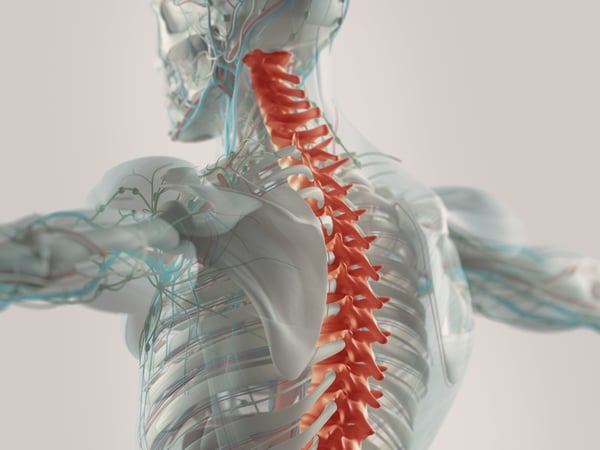Pressure ulcers, also known as bedsores or pressure sores, are a serious concern for individuals with spinal cord injuries in Dubai(إصابات الحبل الشوكي في دبي). Due to reduced mobility and sensation, patients with spinal cord injuries are at higher risk of developing these painful and potentially dangerous skin wounds. Preventing pressure ulcers is crucial for maintaining health, comfort, and overall quality of life. This article outlines effective strategies, practical tips, and essential care guidelines for pressure ulcer prevention in spinal cord injury patients.
Understanding Pressure Ulcers and Their Causes:
Pressure ulcers develop when prolonged pressure restricts blood flow to the skin and underlying tissues, causing tissue damage.
Common Causes Include:
- Immobility leading to sustained pressure on bony areas
- Friction and shear from sliding or repositioning
- Moisture from sweat, urine, or wound drainage weakening skin integrity
- Poor nutrition affecting skin health and repair
- Reduced sensation preventing early detection of discomfort
High-Risk Areas for Pressure Ulcers:
Certain parts of the body are more vulnerable due to their proximity to bones and frequent pressure.
Typical Sites to Monitor:
- Sacrum (lower back)
- Ischial tuberosities (sit bones)
- Heels and ankles
- Elbows and shoulders
- Back of the head
Essential Strategies for Pressure Ulcer Prevention:
Preventing pressure ulcers requires a proactive and consistent approach, combining skin care, mobility, and support.
Key Prevention Techniques:
- Regular repositioning: Change position every 2 hours when lying down and every 15-30 minutes when seated
- Use pressure-relieving devices: Cushions, specialized mattresses, and overlays help distribute pressure evenly
- Maintain skin hygiene: Clean skin gently and keep it dry to prevent breakdown
- Inspect skin daily: Early detection of redness or irritation can prevent ulcer development
- Ensure proper nutrition: Adequate protein, vitamins, and hydration support skin health
Repositioning and Mobility Guidelines:
Movement is the most effective defense against pressure sores.
Tips for Safe Repositioning:
- Use lifting devices or assistance to avoid shear and friction
- Avoid dragging the skin during transfers
- Encourage active movement and stretching if possible
- Incorporate scheduled repositioning into daily care routines
- Educate caregivers and family members on proper techniques
Choosing the Right Support Surfaces:
Specialized equipment plays a vital role in pressure redistribution.
Support Surface Options:
- Foam mattresses and cushions: Provide basic pressure relief
- Gel and air-filled cushions: Offer dynamic pressure distribution
- Alternating pressure mattresses: Automatically adjust pressure points throughout the night
- Low-air-loss beds: Help control moisture and airflow around the skin
Skin Care Best Practices:
Maintaining skin integrity helps prevent ulcers and infections.
Effective Skin Care Tips:
- Use mild cleansers and moisturizers suitable for sensitive skin
- Avoid hot water and harsh soaps that dry out skin
- Pat skin dry gently, especially in folds and creases
- Manage moisture from incontinence using appropriate absorbent products
- Protect skin with barrier creams or films if moisture is unavoidable
Nutrition and Hydration for Skin Health:
Good nutrition is often overlooked but essential for pressure ulcer prevention.
Nutritional Recommendations:
- Increase intake of protein-rich foods to support tissue repair
- Ensure sufficient vitamins C and E for antioxidant protection
- Maintain adequate hydration to keep skin supple
- Consider supplements as advised by healthcare providers
- Monitor and address weight changes to reduce pressure risks
Recognizing Early Signs of Pressure Ulcers:
Early detection allows for prompt intervention and reduces severity.
Warning Signs to Watch For:
- Persistent redness or discoloration that does not fade with pressure relief
- Swelling or warmth in affected areas
- Changes in skin texture, such as hardness or softness
- Pain or unusual sensations reported by the patient
- Open wounds or blisters developing in high-risk zones
When to Seek Professional Help:
Timely medical intervention is critical if pressure ulcers develop or worsen.
Indicators for Medical Consultation:
- Ulcers that do not heal or increase in size
- Signs of infection such as pus, foul odor, or fever
- Increased pain or swelling around wounds
- Difficulty managing skin care at home
- Need for advanced wound care or surgical treatment
Support and Resources Available in Dubai:
Access to specialized care enhances prevention and management outcomes.
Local Resources Include:
- Rehabilitation centers with wound care specialists
- Home healthcare services for regular skin assessment
- Patient education programs on pressure ulcer prevention
- Supply stores offering medical-grade cushions and mattresses
- Support groups sharing experiences and practical advice
Psychological and Emotional Considerations:
Living with the risk of pressure ulcers can affect mental health and motivation.
Ways to Support Emotional Well-being:
- Foster open communication about concerns and discomfort
- Encourage involvement in care routines to build confidence
- Provide access to counseling or peer support groups
- Celebrate prevention successes to boost morale
- Educate on realistic expectations and self-care empowerment
Conclusion:
Preventing pressure ulcers is a vital component of care for those with spinal cord injuries (إصابات الحبل الشوكي) Through diligent repositioning, skin care, proper nutrition, and the use of specialized equipment, patients and caregivers can significantly reduce the risk of these debilitating wounds. Early detection and professional support further enhance outcomes, ensuring better health and quality of life. Prioritizing pressure ulcer prevention empowers individuals to live with greater comfort and dignity.

